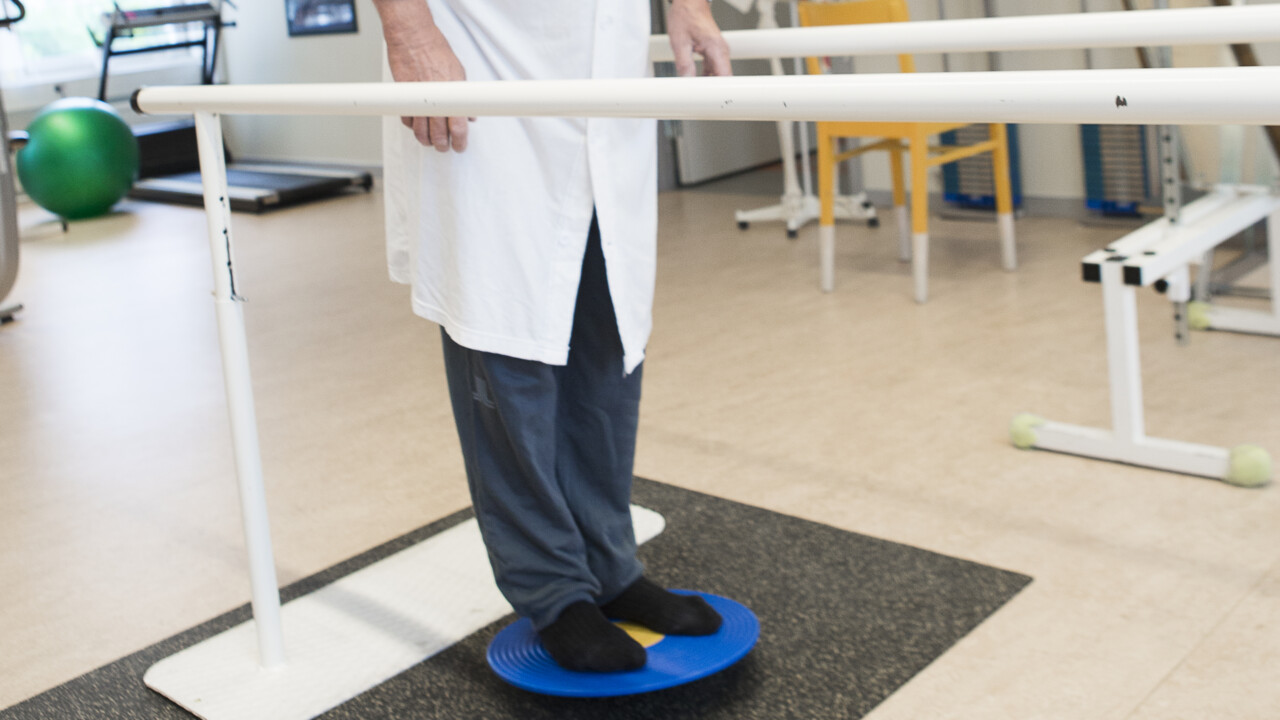CI therapy appears to be a treatment option that can be performed both in hospital day rehabilitation and in outpatient care. People with stroke who have been treated with CI have been interviewed and they consider the treatment absolutely necessary. Based on a patient’s ability to walk six minutes, their health-related quality of life in terms of physical function can be predicted, underscoring the importance of gait and mobility training in stroke rehabilitation.
“We found that high-intensity therapy led to significant improvements in leg function with increased strength, improved balance and the ability to walk and do two things at the same time,” says Angela Marklund, Department of Community and Rehabilitation Medicine, who authored the thesis.
Remaining improvements
In addition, walking speed and the ability to walk longer distances improved in people with stroke. They have maintained or improved their weight bearing more evenly on the more affected leg to a more uniform bearing in standing. The improvements achieved were maintained at follow-up three or six months after the end of treatment.
We also found a strong relationship between time since illness and age in the functional tests performed. Those who completed CI treatment within six months of their illness improved their walking speed to a greater degree than those who completed CI treatment after seven months or more. The younger participants had better balance than the older participants on one of the balance tests.
Independence and self-esteem
Analysis of the interviews conducted about the participants’ experiences created an overarching theme, the main content, which is that CI treatment gave them knowledge about themselves and how their bodies work. This knowledge made it possible to live life more easily. They felt that there was still hope and opportunity for career improvement, which gave them more independence and self-esteem. Although the treatment was intense and difficult, it seemed absolutely necessary.
Increase participation
Compared with the general population in Sweden, participants had a significantly lower health-related quality of life in terms of physical function, physical ability, general health and social function. There was a strong correlation between their scores on the six-minute walk test and the physical function domain.
-With increased function in the affected leg, conditions are created for increased participation in society for those suffering from stroke. Strength, balance and the ability to walk and do two things at the same time are important factors in reducing the risk of falling, says Angela Marklund.
Angela Marklund grew up and lives in Torsby, Värmland. She has worked clinically as a physiotherapist for 20 years in stroke rehabilitation, but is now unit director of the Clinical Studies Research Center in the Värmland region.
On Friday 24 November, Angela Marklund, Department of Community and Rehabilitation Medicine at Umeå University, will defend her thesis entitled Intensive, task-specific treatment with lower extremity CI therapy in individuals with stroke – health-related improvements, experiences, and quality of life. The defense takes place at 09.00 at Aula Biologica, Biologihuset. The opponent is Professor Christina Brogaard, Lund University.

“Extreme tv maven. Beer fanatic. Friendly bacon fan. Communicator. Wannabe travel expert.”







More Stories
Why Rare Earth Metals for Electric Cars Are Crucial for Modern Mobility
“We want to promote critical rules approach”
“A lot happened during the trip,” Jönköping County Council